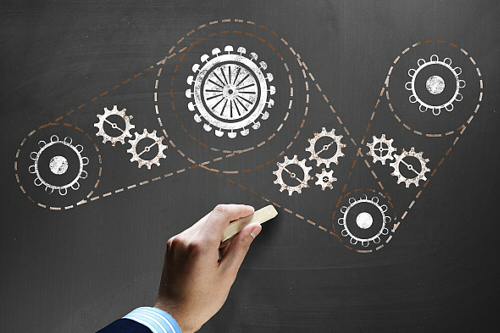Don’t Burn out: Pace Yourself to Avoid Workplace Fatigue
Workplace burnout can diminish performance and should be prevented or treated. Burnout isn’t just a result of long hours and high pressure. Long hours can be worked without suffering burnout if the environment is engaging and offers opportunities to briefly relax. Employees who work from home have both a higher risk of burnout and greater freedom to structure their day to avoid the pitfalls of scheduling themselves into exhaustion.
According to the World Health Organization, burnout is an occupational concern – specifically, a “syndrome resulting from chronic workplace stress that has not been successfully managed.”
Similar to athletes in the pool or on the track, employees need to pace themselves in the office to avoid burning out, new research suggests.
In the study, researchers at theUniversityofVirginiaand theChineseAcademyof Sciences developed a model for how employees should best distribute their efforts during the day to prevent fatigue. Previous research has found that fatigue not only makes work more unpleasant, but it results in decreased productivity.
When developing the model, the researchers found that employees are best served by following one of two patterns, depending on the type of job they have.
One option is the “high-low, high-effort pattern,” which advises workers to manage fatigue by starting and ending their day off with maximum effort and intensity but taking it a little bit easier during the middle of the day.
This pattern is similar to the strategy that Olympic swimmers and runners often use. The study’s authors said these athletes typically try to lower their burn rate after getting off to a strong start, so they have some energy left in their tank for a strong finish.
Some jobs, however, require employees to always perform at maximum intensity. This may include workers who operate machinery or provide customer service. In this “all-or-none” scenario, the researchers say the best pattern for employees to follow is to begin and end the day with “on” periods but take breaks during the day.
Employers who insist on employees keeping a high pace all the time are harming their organization in the long run, according to the study. The researchers said fatigued employees leads to high turnover, low morale and low productivity.
Since fatigue often goes unnoticed until it is already causing problems, the study’s authors said employers are best served by taking preemptive measures to ensure workers don’t get burned out.

Manel Baucells, one of the study’s authors and a professor at theUniversityofVirginia, suggests that managers can help avoid fatigue by giving employees greater control over when they take breaks.
The researchers said their study isn’t meant to say that employees should be working long hours. Working lengthy days is fine, as long as employees are given breaks during the day to recharge.
“Google seems to have learned this lesson and makes the work environment pleasant, promoting fun distractions, while at the same time encouraging long work hours,” Baucells wrote in an article on the University of Virginia Darden School of Business’s website.
For employees who work from home, it is important that they self-manage their time and effort. The study’s authors said they need to avoid the temptation to push hard all day long.
“At-home workers should draw clear home/work boundaries in their schedules (and workspaces) to better facilitate high-low, high-effort, rather than putting in long hours that wind up yielding equivalent (or lower) outputs,” Baucells wrote. “They may even consider starting work immediately upon rising in the morning to take advantage of showering and breakfast as times to rest and reduce accumulated fatigue.”
In the end, the researchers believe employers will see the dividends in ensuring their employees don’t become overfatigued from pushing themselves too hard.
“When it comes to rest and managing fatigue, the incentives of companies and workers are perfectly aligned: Reducing fatigue increases productivity, lowers the cost of providing effort, increase work satisfaction, lower turnover and absenteeism, and ultimately increase profits,” Baucell wrote.
Tips for avoiding workplace burnout
Prevention starts at home. Time management coach Elizabeth Grace Saunders has written extensively on the causes of and remedies for workplace burnout, and she notes that what we do outside the workplace influences our vulnerability to office fatigue. In The New York Times, she recommends making sure that we are taking care of ourselves in a holistic manner – sleeping, eating right and getting good exercise – to ward off the tendency to succumb to workplace burnout.
But she emphasizes that self-care is not one-size-fits-all. For each of us, what we need to recharge our minds and souls can be very different. For an introvert, time spent in meetings and on calls must be “repaid” with alone time. You may need to refresh in solitude, in nature, or with a good book. More extroverted folks may need to recharge their batteries laughing with friends.
Controlling workplace reality. We may not be able to control all aspects of our work environment, but we can help adjust and minimize the impact to ourselves if we recognize the factors which contribute to burnout. According to Six Areas of Worklife: A Model of the Organizational Context of Burnout, which summarized research by Christina Maslach of UC Berkeley and Michael Leiter of Deakin University, the primary factors contributing to workplace fatigue include workload, control, reward, community, fairness and values.
The relative impact of each factor depends on the individual sensitivity to the input. While often workload gets the most attention, fairness and values may have a greater impact on the stress felt by the individual who is internalizing the stress. In addition to the self-care and relaxation techniques offered previously, you may want to consider whether any changes can be addressed to alter the dynamics of the workplace if these factors are part of the environment.








